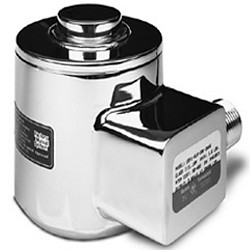The Basics of Load Cell Wiring and Trimming Load cell wiring and trimming are critical to a weighing system’s accuracy and should always be performed by trained scale technicians.
However, general load cell wiring knowledge can help you better understand how your weighing system works and how potential errors occur.
Load cell cables typically have four or six wires. Both versions have positive and negative signal and excitation lines, though a six-wire cable also has positive and negative sense lines. Sense lines are linked to the sense connections of the system’s indicator, sometimes through a junction box, allowing the indicator to sense a load cell’s actual voltage. If there is a voltage drop between the indicator and load cell, the sense lines send that information to the indicator, which automatically adjusts voltage. This compensates for the loss of voltage or amplifies the return signal to compensate for loss of power to the load cell.

Load Cell Color Codes
Load cell wires are color coded to help ensure proper connections. Different load cell brands use different color codes, which is why there are load cell wiring guides available for scale technicians to use during installations.
Adjusting / Trimming / Summing Load Cells
Load cell trimming is sometimes called load cell summing because it involves tying or summing multiple load cell output signals together. This happens in a junction box, also known as a summing box, which sends one system signal to the weight indicator. It’s necessary to trim load cells in a multi-cell system when the weight distribution to each load cell isn’t equal. Click the following link for more about how a load cell works.
For example, in vessel loading processes, the presence of agitators or the type of material, such as powder, can affect how material and weight are distributed to each load cell. Additionally, it’s nearly impossible to make every load cell exactly alike. Tolerances in the manufacturing process allow for some variation in individual load cell specifications, which, if trimming isn’t applied, doesn’t allow for the accuracy necessary for most applications.
Signal trimming is the most common and popular type of load cell trimming because it is the easiest to use. Signal trimming is compatible with nearly all indicators and is relatively unaffected by temperature changes or excessive system vibrations. It involves adding a relatively high parallel resistance between the signal of each load cell, which creates a leakage path that diverts some of the available load cell signal away from the indicator. More load cell signal will be available to the indicator as parallel resistance increases.
Be sure to visit Central Carolina Scale.com often for all your weighing related needs.
